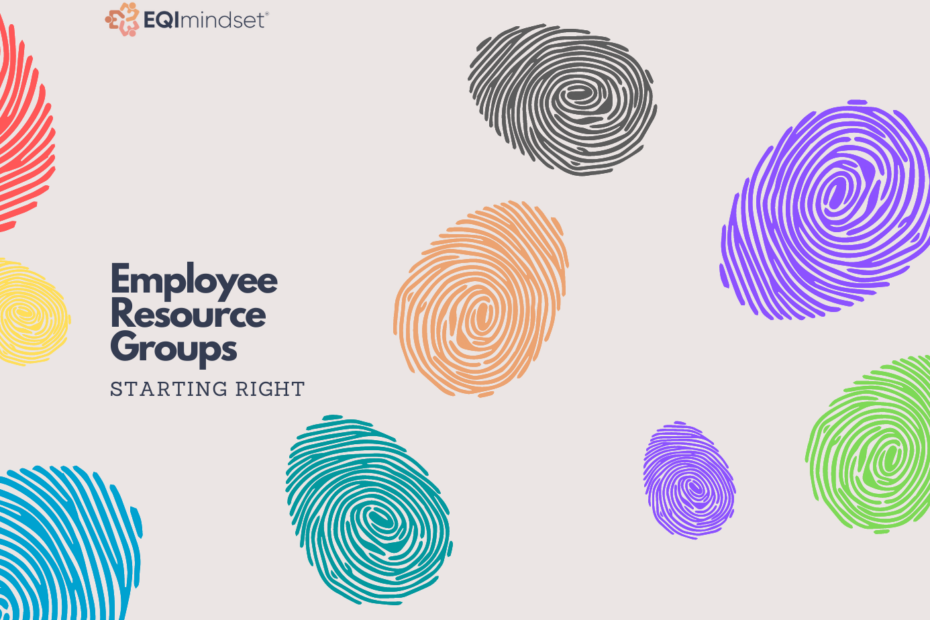Employee Resource Groups are on the Increase and can be a great asset to organizations — If deployed and operated right. A lot of organizations are focused on starting an ERG this season and they can be a great tool for fostering inclusion within your organization. The challenge is that most organizational leaders are starting the groups from two main perspectives:
- The ERG hype in corporate America
- In response to requests from a few passionate (in-group)employees
While both of these perspectives are excellent reasons to kickstart an ERG, the organizational leadership team still has the responsibility to make sure it is done right to avoid alienating other groups, frustrating ERG leaders and members, and overall derailing your inclusion efforts. The two perspectives do not provide an exhaustive approach of what to do and consider for starting a successful ERG.
First, although ERGs can be a key PART of your diversity, equity, inclusion, belonging strategy, and an extension of your core organizational inclusion team, ERG is not your DEI team. Passionate Employees do not mean they have the skills and the bandwidth to sustain a successful ERG.
Here are few areas to consider in starting an Employee Resource Group program for the first time at your organization:
Data Grounded: Start with the Data. Review Internal and External numbers. Establish where your organization currently is in relation to where you need to be and set goals. The data should also help identify the right ERG and the right vision for each ERG. There are a lot of possible ERGS but you don’t need them all and especially not at the same time.
Organizational Diversity, Equity & Inclusion Leadership Team: If you don’t have one create one. If you do have DEI teams then the ERG should be a key part of your DEI strategy and an extended team. ERG set up as an independent strategy is not sustainable and DEI is not HR. ERG members can also be a great part of DEI projects, committees, taskforce groups.
Leader Champions: These groups should be employee-led but leader championed. Leadership support is important especially as you start a new ERG. Identify the right leaders who are aligned and well recognized enough to lend a voice to the advocacy effort within your organization for the group.
Training for ERG leaders: Passion cannot substitute for skill and competency training in a sustainable system. Investing in the individual employees that have volunteered to Lead the ERG is a good talent development tool for the organization.
Employers fear training and losing employees. The truth is the cost of over-training and cross-training is less than the cost of undertraining for your organization.
Define the Mission and Vision for each ERG: Organizations make the mistake of lumping all ERGS together. all ERGS are NOT the same. The challenges each ethnic, gender, or special interest group faces is going to be different. The overall ERG mission and vision need to align with the organization but give the ERGS room to own the mission and shape it in the way that best delivers value to the group and ultimately your organization.
Metrics/Tools: Lumping the ERG metrics and tools together here is intentional. A lot of organizations find it easy to say yes to the employees to run ERG but there is a lot of burnout and exhaustion when the ERGs have no way of seeing and showing how the work they do is making a difference. If you are starting an ERG this is the best time to think about metrics alignment and tracking platform for the ERG membership and programs.
Funding: The least common discussion for organizational leaders is funding. It is also the first go-to place for most ERGs. The funding is needed but if all the other support systems are not in place and you throw money at ERGs then the results are not guaranteed to be inclusive for all. Financial Investment is critical for ERGS to put programs together internally and also in collaboration with external parties.
Compensation for ERG Members: This is an area where there are different strategies in a pilot within organizations. Financial compensations tied to performance, metrics, quarterly, annual bonuses. The key is that ERG leaders go above and beyond their paid jobs to run the groups and should be compensated. That compensation needs to be discussed and while it might not be an out-of-the-door strategy for a brand new ERG, the earlier the organization starts to think about it the easier it would be to implement and sustain.
